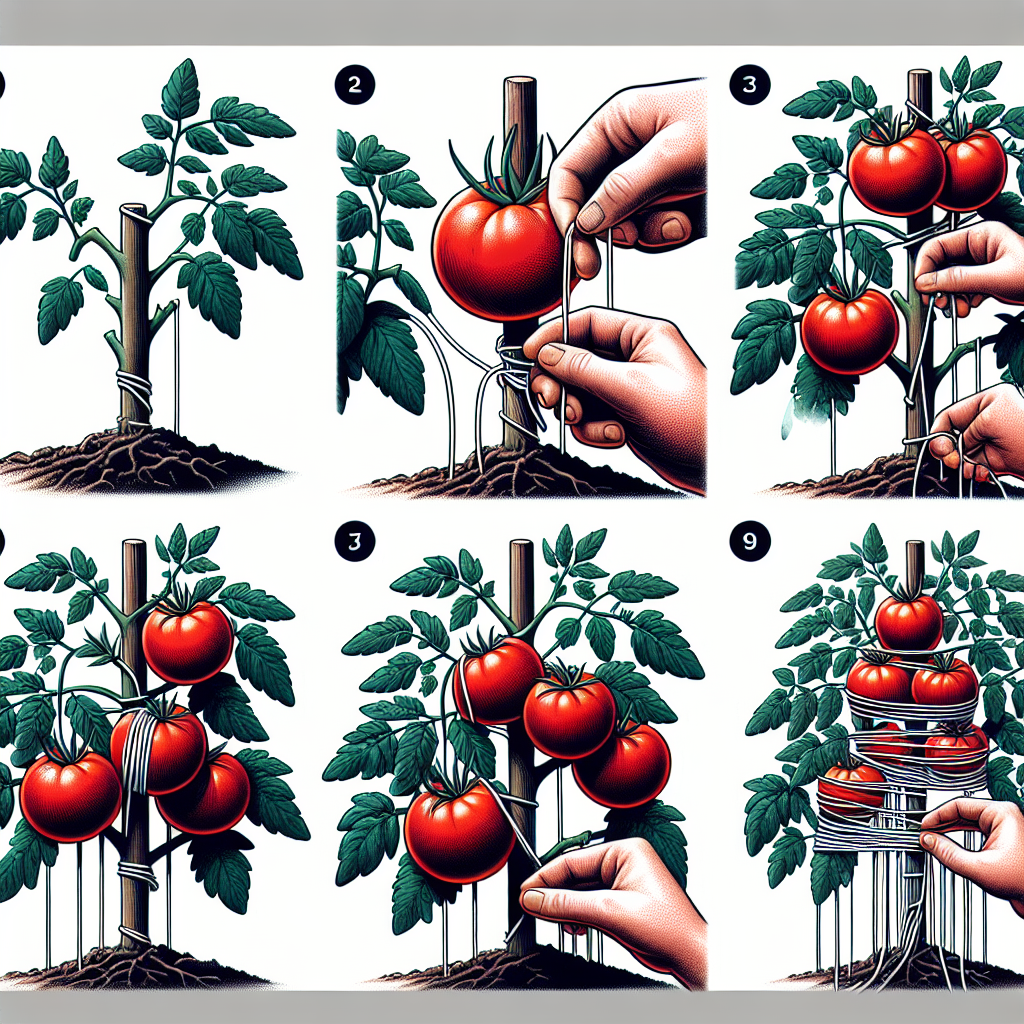
How to trellis tomatoes with string
Introduction to Trellising Tomatoes
Growing tomatoes can be one of the most rewarding gardening experiences. However, maintaining healthy tomato plants involves more than just planting seeds and watering. One key practice that can significantly enhance your tomato harvest is trellising. In this article, we will explore the benefits of trellising tomatoes, how to do it using strings, and valuable tips to ensure a successful gardening experience.
The Importance of Trellising for Tomatoes
Trellising tomatoes serves several essential purposes that can lead to healthier plants and better yields. Here are a few reasons why trellising is important:
- Improved Air Circulation: By elevating tomato plants, you increase airflow around them, reducing the risk of fungal diseases.
- Better Sun Exposure: Trellising allows your tomatoes to receive optimal sunlight, which is crucial for photosynthesis and fruit development.
- Easy Maintenance: Elevated plants are easier to prune, water, and inspect for pests.
- Higher Yields: Trellising can help increase the fruit quantity and quality due to reduced ground contact.
What You Need to Get Started
Before you start trellising your tomatoes with string, it’s vital to gather the necessary materials and tools. Here’s a list of what you will need:
- String or Twine: Durable materials like jute or nylon work well for supporting the plants.
- Trellis Posts or Stakes: These can be made from wood, metal, or PVC and will act as the base for your string trellis.
- Scissors: For cutting your string to the desired lengths.
- Plant Ties or Clips: Optional but useful for securing the plants to the string.
Steps on How to Trellis Tomatoes with String
Now that you have your materials ready, let’s delve into the detailed steps on how to trellis tomatoes with string:
Step 1: Choose the Right Location
Select a sunny spot in your garden, as tomatoes thrive in full sun for at least six to eight hours daily. Ensure that the area has good drainage to prevent waterlogging.
Step 2: Prepare Your Support Structure
Decide on the type of support you want for your tomatoes. The most common options include:
- Stakes: Simple and highly effective for indeterminate tomato varieties.
- Trellis Panels: For a more aesthetically pleasing setup.
- Cages: A quick and easy fix for determinate varieties.
Regardless of your choice, ensure the supports are tall enough to accommodate the eventual height of your tomato plants, which can reach up to 6 feet.
Step 3: Plant Your Tomatoes
Plant your tomato seeds or seedlings at least 24-36 inches apart to give them ample room to grow. This spacing is important for airflow and leaf health.
Step 4: Attach the Strings
Once your tomatoes are planted and have started growing, it’s time to set up the string trellis:
- Secure the Trellis Posts: Drive the posts into the ground around the tomato plants, ensuring they are stable and upright.
- Attach the String: Tie the string securely to the top of the support post. You can run multiple lines of string at different heights (e.g., 12, 24, and 36 inches) for better support as the plant grows.
- Run the String to the Sides: Stretched tightly, the string should extend down the length of the plant. Ensure there is enough slack for the tomato plant to grow without breaking the string.
- Secure the String: Use plant ties or clips to attach the branches of the tomato plants gently to the string, helping to guide their growth upwards.
“A well-structured trellis can elevate the health and productivity of your tomato plants.”
Maintaining Your Trellis System
Caring for your trellised tomatoes is crucial for a bountiful harvest. Here are some maintenance tips to keep your system running smoothly:
- Regularly Check String Tension: Ensure the string remains taut but not constrictive around the plants.
- Prune and Remove Suckers: Regularly prune your tomato plants to promote better airflow and focus energy on fruit production. Remove suckers that grow in the joint between the stem and branch.
- Monitor Growth: Adjust the string height as the plant grows taller to provide continuous support.
- Inspect for Pests: Keep an eye out for pests and diseases by regularly inspecting your plants.
Additional Tips for Successful Tomato Trellising
Here are a few additional tips to maximize your success when trellising tomatoes:
- Choose the Right Tomato Variety: Consider growing indeterminate varieties that benefit most from trellising.
- Consider Companion Planting: Pair tomatoes with basil or marigolds to deter pests naturally.
- Avoid Water on Leaves: Water directly at the soil level to maintain dryness on the leaves and reduce disease risk.
Common Mistakes to Avoid When Trellising Tomatoes
While trellising can greatly benefit your tomato plants, there are actions that could hinder their growth. Avoid these common mistakes:
- Overcrowding Plants: Ensure adequate space between plants to prevent disease and improve airflow.
- Neglecting Maintenance: Regular maintenance is necessary for healthy plants; don't let weeds, pests, or diseases take hold.
- Using Weak Materials: Always opt for sturdy materials to support the weight of the plants when they are laden with fruit.
Conclusion
Trellising tomatoes using string is an effective technique that enhances plant health, improves yields, and simplifies maintenance. By following the steps outlined in this article, you can establish an efficient trellis system that supports your tomato plants as they grow. Whether you are an experienced gardener or just starting your journey, this method can lead to a fruitful tomato harvest. Start your trellising project today and enjoy the rewards of your hard work!
By Guest, Published on October 2nd, 2024